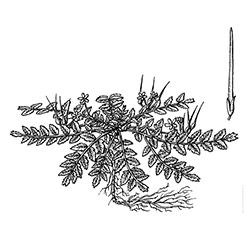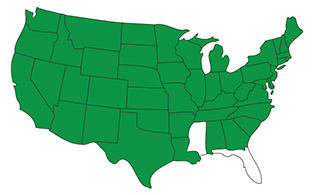

Filaree
Erodium cicutarium
Filaree can grow as either a winter annual broadleaf weed or a biennial broadleaf weed. This versatile plant is also sometimes referred to as Redstem Filaree, Common Storksbill, Heronsbill, Alfilaria, Pin-weed and Pin-grass.
Identify

Rosette

Serrate

Lanceolate
Filaree overwinters as a horizontally growing basal rosette. Its leaves and stems are often reddish in color, and its stems grow low, are hairy and are sparsely leaved. The leaflets are deeply cut, nearly to the mid-vein, with stem leaves slightly smaller in size but also compound and deeply cut. Filaree has a shallow taproot with a secondary fibrous root system. Blooming from March through November, this broadleaf weed produces flowers with five purple or purplish-pink petals; five green, hairy sepals; 10 stamens; and five united styles with purple stigmas in the center. Only one or two flowers are in bloom at the same time. Reproduction occurs by seeds.
Life Cycle
This broadleaf weed prefers dry, sandy soils and commonly grows in open grassy areas, lawns, waste grounds and along sidewalks and roadsides. Filaree can be found throughout much of the continental United States with the exception of Florida and Mississippi.

Control
Cultural weed control methods, such as proper mowing or hand-pulling weeds, are largely ineffective against Erodium cicutarium. Once established in your lawn, physical removal is no longer an option for complete control. Professionally applied broadleaf weed killers are the only way to ensure total removal.







